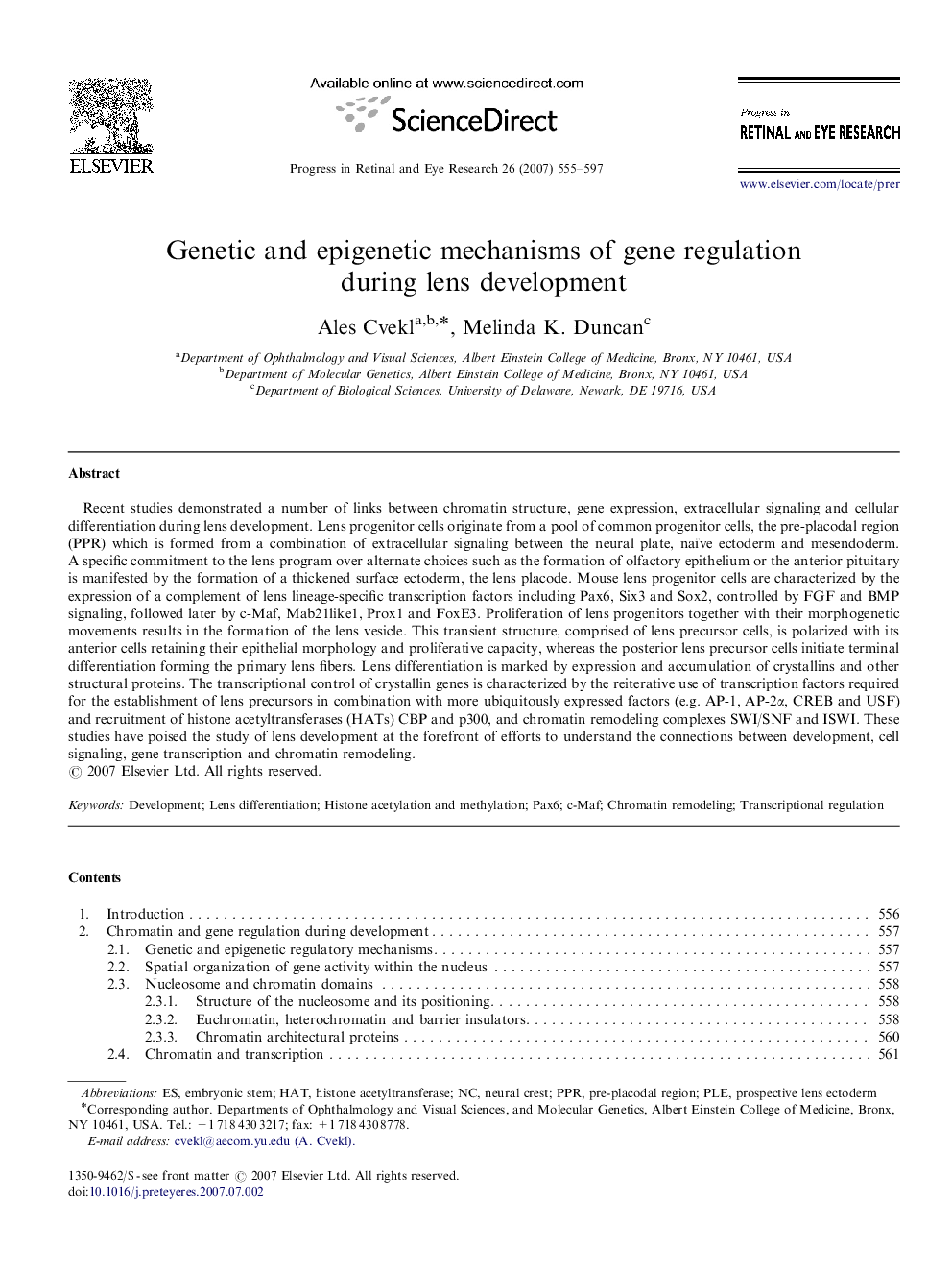| Article ID | Journal | Published Year | Pages | File Type |
|---|---|---|---|---|
| 4032179 | Progress in Retinal and Eye Research | 2007 | 43 Pages |
Recent studies demonstrated a number of links between chromatin structure, gene expression, extracellular signaling and cellular differentiation during lens development. Lens progenitor cells originate from a pool of common progenitor cells, the pre-placodal region (PPR) which is formed from a combination of extracellular signaling between the neural plate, naïve ectoderm and mesendoderm. A specific commitment to the lens program over alternate choices such as the formation of olfactory epithelium or the anterior pituitary is manifested by the formation of a thickened surface ectoderm, the lens placode. Mouse lens progenitor cells are characterized by the expression of a complement of lens lineage-specific transcription factors including Pax6, Six3 and Sox2, controlled by FGF and BMP signaling, followed later by c-Maf, Mab21like1, Prox1 and FoxE3. Proliferation of lens progenitors together with their morphogenetic movements results in the formation of the lens vesicle. This transient structure, comprised of lens precursor cells, is polarized with its anterior cells retaining their epithelial morphology and proliferative capacity, whereas the posterior lens precursor cells initiate terminal differentiation forming the primary lens fibers. Lens differentiation is marked by expression and accumulation of crystallins and other structural proteins. The transcriptional control of crystallin genes is characterized by the reiterative use of transcription factors required for the establishment of lens precursors in combination with more ubiquitously expressed factors (e.g. AP-1, AP-2α, CREB and USF) and recruitment of histone acetyltransferases (HATs) CBP and p300, and chromatin remodeling complexes SWI/SNF and ISWI. These studies have poised the study of lens development at the forefront of efforts to understand the connections between development, cell signaling, gene transcription and chromatin remodeling.
